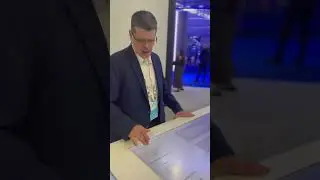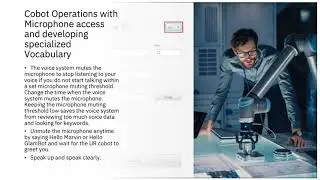Natural Language Processing in Collaborative Robots | Cobots
The video titled "Natural Language Processing in Collaborative Robots (Cobots)" provides an overview of two papers presented at conferences, ICCE 2024 and IMCET'23, both exploring the integration of Natural Language Processing (NLP) in the field of collaborative robots. Here are the key points covered in the video:
Focus and Scope:
ICCE 2024:
Primary focus on enhancing Human-Cobot Interaction (HCI) through NLP.
Integration of CoboVox voice recognition system.
Methodology includes vocabulary building, language processing model analysis, and practical implementation for efficient programming and control of cobots using voice commands.
IMCET'23:
Broader scope, exploring NLP integration in cyber-physical systems with emphasis on cobots.
Aims to conduct a comprehensive survey of NLP applications in AI-assisted networking and systems.
Methodology involves meticulous categorization of existing NLP research on cobots.
Application and Implementation:
ICCE 2024:
Practical implementation of CoboVox voice recognition into UR3e cobot interface.
Focus on real-time voice-activated engagement.
IMCET'23:
Broader approach, aiming to unravel enhancements in communication, decision-making, and collaboration.
Encompasses real-time decision-making, collaborative interactions, and training processes.
Keywords:
ICCE 2024:
Human-Cobot Interaction, Natural Language Processing, Voice Recognition, Voice Commands, Collaborative Robots, Vocabulary Building, CoboVox.
IMCET'23:
NLP, Cobots, Communication, Machine Learning, HRI, AI.
Industrial Impact:
ICCE 2024:
Explicit mention of potential benefits for Industry 4.0.
Highlights responsible implementation and improved human-robot collaboration.
IMCET'23:
While not explicitly mentioned, the broader scope suggests implications for industrial applications and advancements in human-cobot collaboration within cyber-physical systems.
In summary, the video provides insights into the specific focuses, methodologies, applications, and potential industrial impacts of the two papers, offering a comparative understanding of how NLP is being applied and studied in the realm of collaborative robots.

![[FREE] SLIMESITO x BEEZYB TYPE BEAT 2022 -](https://images.videosashka.com/watch/1EoTITwenvE)





























